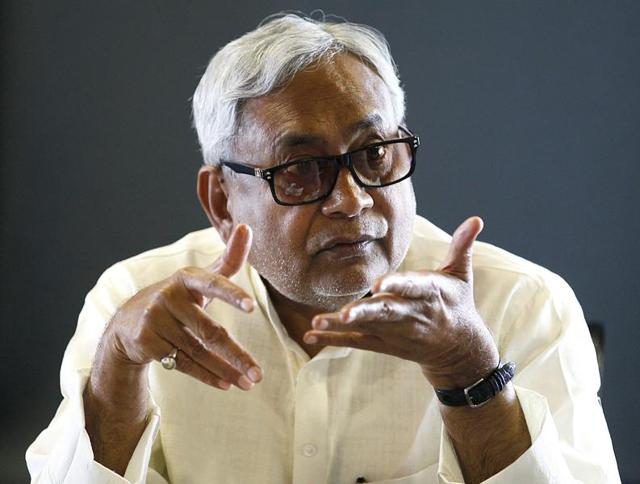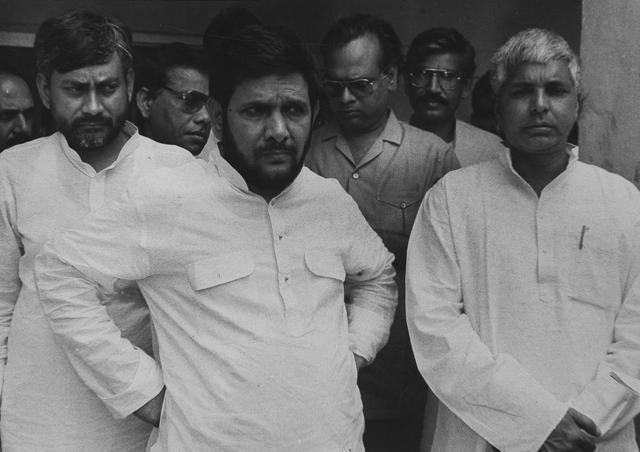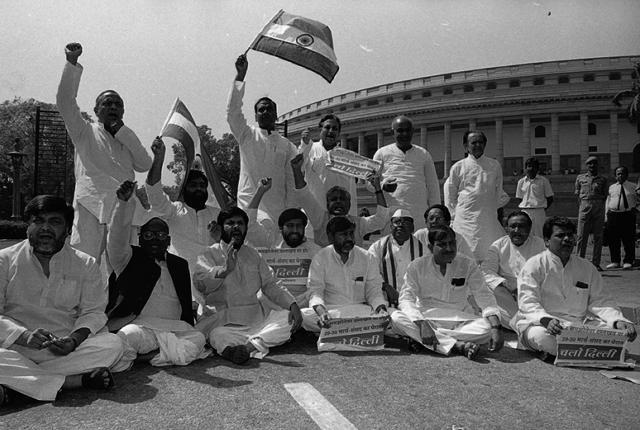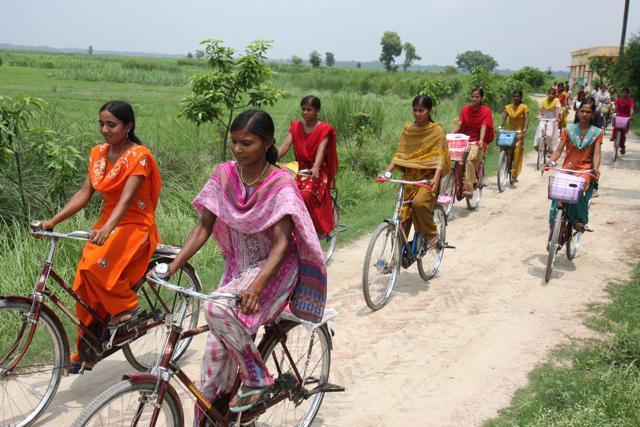In the times of Nitish Kumar: Is this Bihar’s second coming?
Is this Bihar’s second coming? Its chief minister, a long-time player of power politics, rides on the promise of changing the state’s image
The general election year of 2014 was not a good time to be Nitish Kumar. After he broke his alliance with the BJP, the former partner swept up seats in his home state of Bihar. Nitish’s great rival Lalu Yadav, who did a little better in the same election, relished the schadenfreude. When I visited him at his Patna home in March 2014 during the campaign, Lalu had crowed: “To throw me out of power, they made a love marriage, and now that marriage is divorce! He is very disturbed and perturbed. Mr Nitish Kumar is a very proud and arrogant man.”

Narendra Modi rubbed salt in the wound, saying one year later that “there was some problem with Nitish Kumar’s DNA.” Nitish answered angrily that the prime minister was insulting ‘Bihari Asmita’. Then, this crafty long-time player of power politics in the state confounded all expectations by making an unexpected alliance with his opponent Lalu for the 2015 assembly elections, and used his strategic knowledge of Bihar’s social and caste equations to trounce the BJP and return triumphantly to power. A week ago, Nitish took over as the national president of the JD(U), setting himself up as a potential prime ministerial candidate for the 2019 general election. “One day I’ll become PM,” he used to say to his batchmates at the Bihar College of Engineering in the early 1970s, and they laughed. But it is far from impossible.
Today, the 65-year-old Nitish Kumar looks utterly at home in the chief minister’s residence in Patna, as if he could not imagine being anywhere else. His capacious face is dusted with grey stubble, his hair layered in a wave across the head. He wears a perfectly tailored white linen kurta pajama; rather than cuffs, it has sleeves that are slightly too long and fold back crisply. On his left wrist, a watch faces inwards; on the little finger of his right hand is a silver ring. Nitish enjoys the accoutrements of office: the tall doors of polished wood, the liveried servants, the Bodhi tree that he planted in the garden and invited the Dalai Lama to inaugurate, which builders are now surrounding with a carved marble balustrade.
Read | Arvind Kejriwal: Delhi’s chief micromanager, thoughtful tactician
For forty years, he has avoided personal attachments and rumours of corruption; he is a widower, and his only child Nishant is not involved in politics. In a biography, Single Man, Sankarshan Thakur describes how at the age of 16 when Nitish came from the roadside town of Bakhtiyarpur to the science college in Patna, he warded off cockroaches in his cupboard with naphthalene balls and gave bars of soap to the hostel cooks.
What was Bakhtiyarpur like, I ask? “An average small place.” Can he describe his childhood in the 1950s? “Our home was on a road which is now a national highway. Bakhtiyarpur was a place for villages from round about to use as a local market. It is on the banks of the Ganga, so people would come and bathe on auspicious days. My father was an ayurvedic practitioner. He would tell us stories of the freedom movement when I came home from school. We used kerosene lamps. In my childhood days, I didn’t know Bakhtiyar Khilji had gone from there [in around the year 1200] to destroy Nalanda University! In the winter season, after exams, I would go with my mother to my father’s ancestral village, 7km away. She would monitor cultivation and take accounts of the crops and animals.”

Now you live in this style, I say, gesturing at the expanse of his office. Nitish bursts out laughing. “This is the Chief Minister’s house and residence! It’s usual that it’s like this.” But not every CM of Bihar lives in the same way, I suggest. “The whole image of Bihar has changed. People did not expect anything of Bihar in earlier days. The basic responsibility of any state government under our Constitution is to protect law and order. Then comes infrastructure.” The improvement during his tenure as chief minister from 2005-2014 was noticeable: driving from Patna to Benares, for example, the quality of the roads declines visibly when you cross into UP. It is a far cry from the days of Lalu’s rule, when in the words of one old Patna resident, “Kidnapping was an industry. If you had a vehicle, people would say don’t go by road, go by train.”
Nitish speaks admiringly of the Maurya period and Patliputra, of Mahavir and Guru Gobind Singh, and of the Champaran movement. “Everybody connects to some extent with Bihar in ancient times, and the laws on law and order, on governance that came from here. I’m not a religious follower, but I’m greatly attracted to Lord Buddha, who got enlightenment here. We’re proud of our history. If a person doesn’t know about history, he can’t be understanding now – the present.”
Read | Hanging up sacred thread: Yechury on combining class and caste struggle
Nearly all of the leaders in Bihar today – Nitish Kumar, Lalu Yadav, Sushil Modi, Ram Vilas Paswan – emerged out of the JP movement. At the time, Nitish was a minor student politician who was known less for his fiery speeches than as a backroom operator. Jayaprakash Narayan called a Bihar Bandh in 1974, and the young leader was arrested under MISA. Socialists and Lohiaites found themselves banged up with members of the RSS. What did he do wrong, I ask, and again Nitish begins to laugh. “I had organised a class boycott! I was arrested in early September 1974 and taken to Gaya central gaol, which is the hottest place in Bihar. Few people were there who weren’t political prisoners. It was a very tough jail. Then I went to Patna central gaol in the first week of December. They released all of us before the Emergency and arrested me again after the Emergency. After that, I was imprisoned in Buxar central gaol.”

Incarceration gave politicians a chance to read and discuss ideas, as it had during the freedom movement. From Class 8, Nitish was studying newspapers like the four-page local daily Pradeep. Although his father was a Congress activist, the son was in the youth wing of the Socialist Party. “The younger mind is always against the Establishment,” he says. “I had read Gandhi and the nationalist thinkers, and in gaol I had gone through Marxist analysis and other writers.” The pracharak K. N. Govindacharya was detained with him in Gaya. “He told us all about the RSS. I was not impressed at all. I was reading Lohia’s writing on caste, and convened a group to hold a discussion every day. Dr Lohia had a very genuine analysis of Indian society. My book disappeared all of a sudden! Maybe the RSS didn’t like it. Earlier the Marxists didn’t like it either. Let me tell you this: I can argue on ideology. It is because I have read the books written by the ideologues of my opponents.”
Nitish Kumar curls his long right index finger under his chin. “Whatever this Swachh Bharat Abhiyan is, it was Lohia-ji’s idea in the 1940s and 50s. He pleaded for cleanliness and toilets in every household. From early childhood in my family, we had a toilet. I could see open defecation every day in the fields and by the rivers, which is why I have very strong opinions about it even now. Dr Lohia stood for women’s empowerment, regardless of caste. His analysis was that caste is a reality: it must end, but it is a reality.” This is Nitish’s approach too – to be ancient and modern.
Read | Opportunist or rockstar? Owaisi recasting Muslim politics in India
PATRICK FRENCH SPEAKS TO NITISH KUMAR ON PROHIBITION

As with most things in the life of a successful chief minister, Nitish Kumar’s policy on alcohol is a cocktail of strongly-held conviction and political calculation. He has a moral disapproval of liquor, believing it causes terrible social damage. When I asked him if he found himself in situations where other people were enjoying a glass of rum or whisky, he said no. “I don’t have friends who do that. I have always been opposed to alcoholic liquor. Since I was a student, always. I was not happy if people are drinking alcohol. I don’t like it. I am convinced liquor breaks the families of so many. Matlab, it has a negative impact on life.”
He claims the moment he decided to turn his private belief into public policy was when he attended a programme for women’s development in Bihar in July 2015, in advance of the assembly elections. “I spoke there, and after I had finished a woman speaker who was on the stage called for a ban on liquor. I went back to the podium and said, ‘When I am in power, we will have Prohibition.’ There were a lot of cheers.”
He knows bootlegging is likely to take off in Bihar. “It is not the first time we have done Prohibition, but it was stopped in 1979 by Congress. During my first term in office, I had started a discussion with the officers concerned in the state government about how to deal with the revenue loss. It was a learning procedure. I realised the alcohol industry was a monopoly, and the feeling in my mind was: ‘Why not break the chain? It causes so much damage.’ I have gone into intimate details. We have started a de-addiction centre. There were none in Bihar until now.”

For many women in Bihar, alcohol is a menace that dissolves money, makes husbands violent and destroys families. Nitish’s political calculation is that while most men in Bihar vote along caste lines, it may be possible to create a vote-bank of his own consisting of half the population. His popularity among women voters is already strong, because of his earlier policy of giving bicycles to girl students, having 50 percent reservation for women in panchayat elections, and reserving 35 percent of government jobs for women. With Prohibition, he hopes to secure the allegiance of many millions of Bihari women – who, as it happens, are more likely than men to turn out and cast their ballot when election day comes round.





